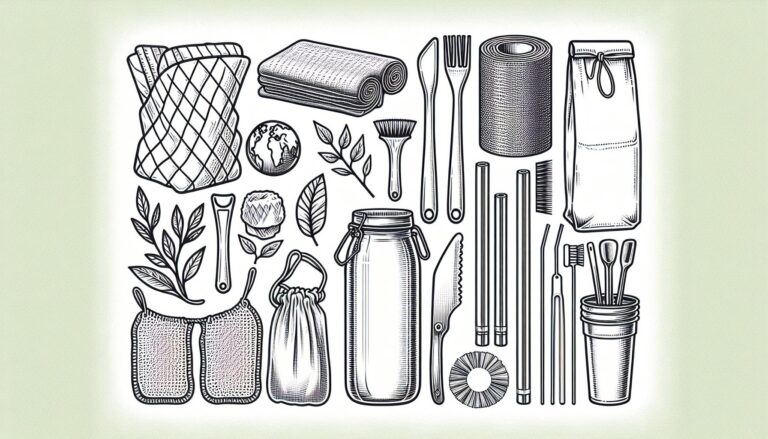As someone passionate about fashion, I’ve witnessed a remarkable shift towards sustainability in the industry. The rise of sustainable fashion isn’t just a trend; it’s a movement reshaping the way we view style and ethics. In this article, I’ll guide you through the key aspects of this transformative shift and what you need to know to embrace it fully.
From eco-friendly materials to ethical production practices, sustainable fashion encompasses a wide range of initiatives aimed at reducing the industry’s environmental footprint and promoting social responsibility. Understanding these principles is crucial for anyone looking to make informed choices about their wardrobe without compromising on style or values.
Join me as we explore the exciting world of sustainable fashion, uncovering the latest innovations, brands making a difference, and practical tips for incorporating sustainability into your personal style. Let’s embark on this journey together towards a more conscious and stylish future.
Evolution of Sustainable Fashion
Fashion has come a long way in terms of sustainability over the years. Eco-friendly materials are now at the forefront of many brands’ collections. Organic cotton and recycled polyester are becoming increasingly popular for their lower environmental impact. Sustainable fashion is no longer just about dull, shapeless clothing; it’s about being stylish and environmentally conscious.
In the past, fast fashion dominated the industry, leading to exploitation of workers and environmental degradation. However, with the rise of sustainable fashion, there has been a shift towards ethical production practices and transparency in the supply chain. Brands are now focusing on fair wages and safe working conditions for garment workers.
Consumers, too, play a crucial role in the evolution of sustainable fashion. Demand for transparency and accountability from brands has pushed the industry to change. People are now more aware of the impact of their clothing choices on the environment and society. By choosing sustainable fashion, individuals can make a difference and contribute to a more ethical and eco-friendly future.
Innovations in technology have also played a significant role in the evolution of sustainable fashion. From 3D printing to zero-waste patterns, designers are finding creative ways to reduce waste and minimize their environmental footprint.
Embracing sustainable fashion is not just a trend; it’s a step towards a more ethical, stylish, and sustainable future. As the industry continues to evolve, staying informed and making conscious choices can have a positive impact on both the fashion world and the planet.
Importance of Sustainable Fashion
Sustainable fashion is critical for our planet’s future. It’s a key player in reducing the fashion industry’s massive environmental footprint. Fact: The fashion industry is responsible for 10% of global carbon emissions. Embracing sustainability in fashion helps lower this impact.
By choosing sustainable fashion, we support ethical practices and fair treatment of workers. Did you know? Over 75 million people are employed in the global fashion supply chain, many of whom face poor working conditions and unfair pay.
Opting for sustainable clothing promotes a circular economy. Fun fact: 73% of clothing eventually ends up in landfills. Sustainable fashion strives to reduce this waste through recycling and upcycling, extending the lifespan of garments.
As consumers, we hold the power to drive change in the fashion industry. Key point: Demand for sustainable fashion is on the rise, pushing brands to prioritize eco-friendly materials, ethical production, and transparency.**Sucessfuly integrating sustainable fashion practices into daily choices paves the way for a more ethical and environmentally conscious future.
Eco-Friendly Materials in Fashion
When it comes to sustainable fashion, opting for eco-friendly materials is a game-changer. These materials are produced with minimal environmental impact and often have a smaller carbon footprint compared to traditional fabrics. Key eco-friendly materials to look out for include:
- Organic Cotton: Grown without synthetic pesticides and fertilizers, organic cotton reduces water usage and promotes soil health.
- Hemp: A versatile plant that requires little water and no pesticides to grow, hemp is known for its durability and biodegradability.
- Recycled Polyester: Made from recycled plastic bottles, this material helps divert waste from landfills and reduces energy consumption.
- Tencel (Lyocell): Produced from sustainably sourced wood pulp, Tencel is biodegradable and has a closed-loop production process.
By choosing clothing made from these eco-friendly materials, you can significantly reduce the environmental impact of your wardrobe. Fashion brands are increasingly embracing these materials to meet the growing demand for sustainable options in the industry. Let’s make a conscious choice for the planet without compromising on style.
Ethical Production Practices
When it comes to sustainable fashion, ethical production practices play a crucial role in ensuring the well-being of both people and the planet. Fair labor conditions are a cornerstone of ethical production, ensuring that garment workers are treated with respect, paid fairly, and work in safe conditions.
By opting for brands that prioritize transparency in their supply chain, you can support companies that value accountability and ethical sourcing. Look for certifications like Fair Trade and B Corp to ensure that your clothing is produced ethically.
Upcycling and deadstock fabrics are also gaining popularity in sustainable fashion. Upcycling involves repurposing old garments or materials into new pieces, reducing waste and giving new life to pre-existing materials. Deadstock fabrics refer to unused or excess fabric that would otherwise end up in a landfill.
Choosing fashion pieces made through Ethical Production Practices not only supports the well-being of communities but also contributes to a more sustainable industry overall. It’s essential to consider the entire lifecycle of a garment, from sourcing materials to manufacturing and distribution, to make truly conscious choices in fashion.
Embracing Sustainable Fashion in Your Style
When it comes to embracing sustainable fashion in your style, there are several ways to make mindful choices that have a positive impact on the environment and society. Here are some tips to incorporate sustainability into your wardrobe:
- Buy Less, Choose Well: Opt for timeless pieces that are versatile and well-made, rather than following fast fashion trends.
- Shop Secondhand: Explore thrift stores, consignment shops, and online platforms for unique pre-loved finds.
- Support Sustainable Brands: Look for certifications such as Fair Trade or B Corp to ensure ethical and eco-friendly practices.
- DIY and Upcycle: Get creative by upcycling old clothes or customizing your garments to give them a new life.
- Care for Your Clothes: Extend the lifespan of your wardrobe by following proper care instructions and repairing items when needed.
By making conscious choices in how we consume fashion, we can not only reduce waste but also support a more ethical and sustainable industry for the future.
Key Takeaways
- Sustainable fashion is a movement reshaping the industry: It focuses on eco-friendly materials, ethical production practices, and consumer awareness to reduce the environmental impact of fashion.
- Consumers drive change in the industry: By choosing sustainable fashion, individuals can make a difference, support fair treatment of workers, and promote a circular economy.
- Opt for eco-friendly materials: Look for organic cotton, hemp, recycled polyester, and Tencel to reduce the environmental footprint of your wardrobe.
- Prioritize ethical production practices: Support brands that value transparency, fair labor conditions, and upcycling to contribute to a more sustainable industry.
- Incorporate sustainability into your style: Buy timeless pieces, shop secondhand, support sustainable brands, upcycle, and care for your clothes to make mindful choices and minimize waste.
Conclusion
Embracing sustainable fashion is not just a trend; it’s a conscious choice that can make a significant impact on the environment and the fashion industry. By opting for timeless pieces, shopping secondhand, supporting certified sustainable brands, upcycling, and taking care of our clothes, we can all contribute to a more ethical and sustainable future. It’s about making informed decisions and being mindful of the impact our fashion choices have on the world around us. Together, we can reshape the fashion industry into one that values sustainability and ethical practices. Let’s continue to prioritize sustainability in our fashion choices and be part of the positive change towards a greener and more responsible fashion industry.



